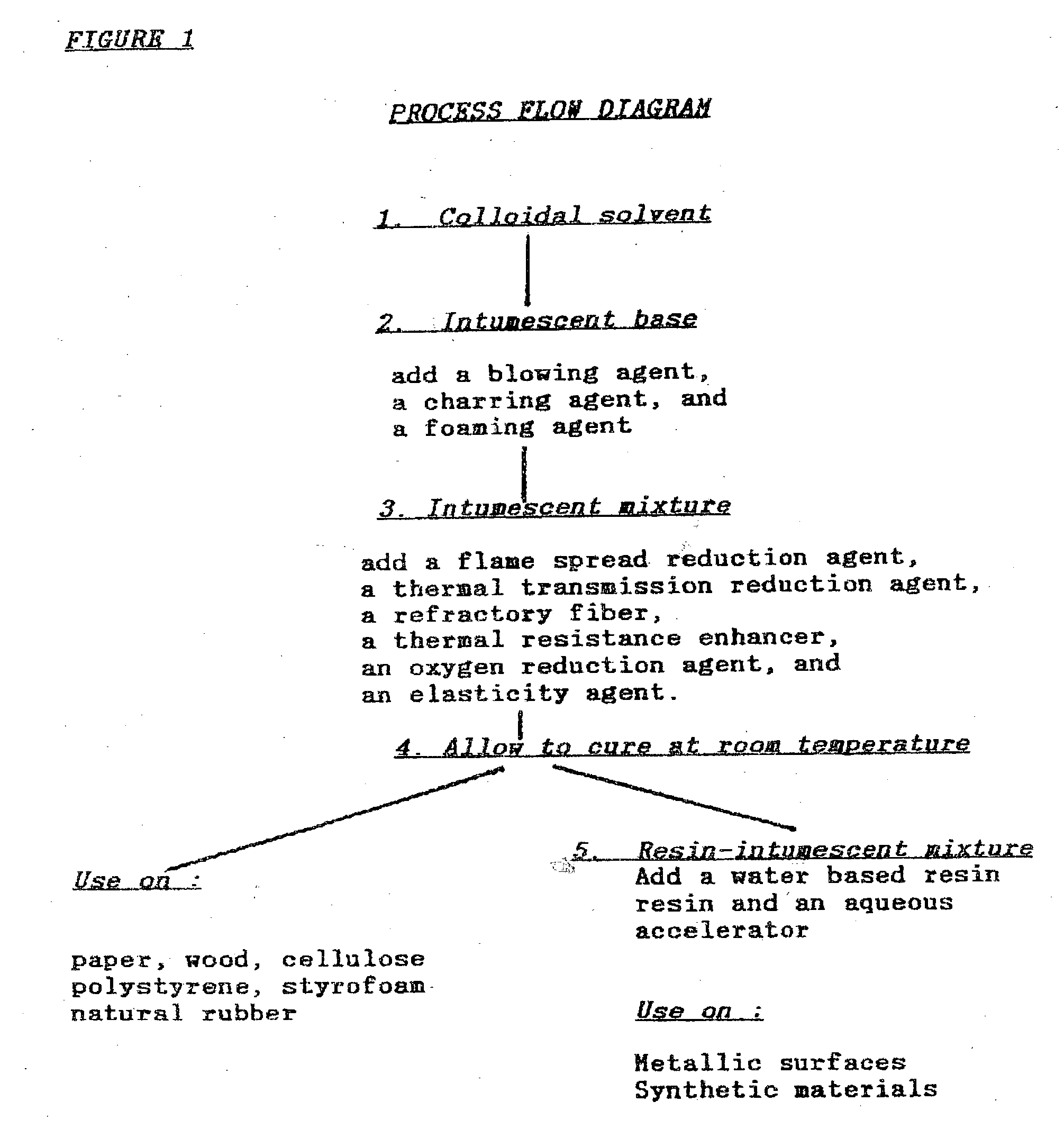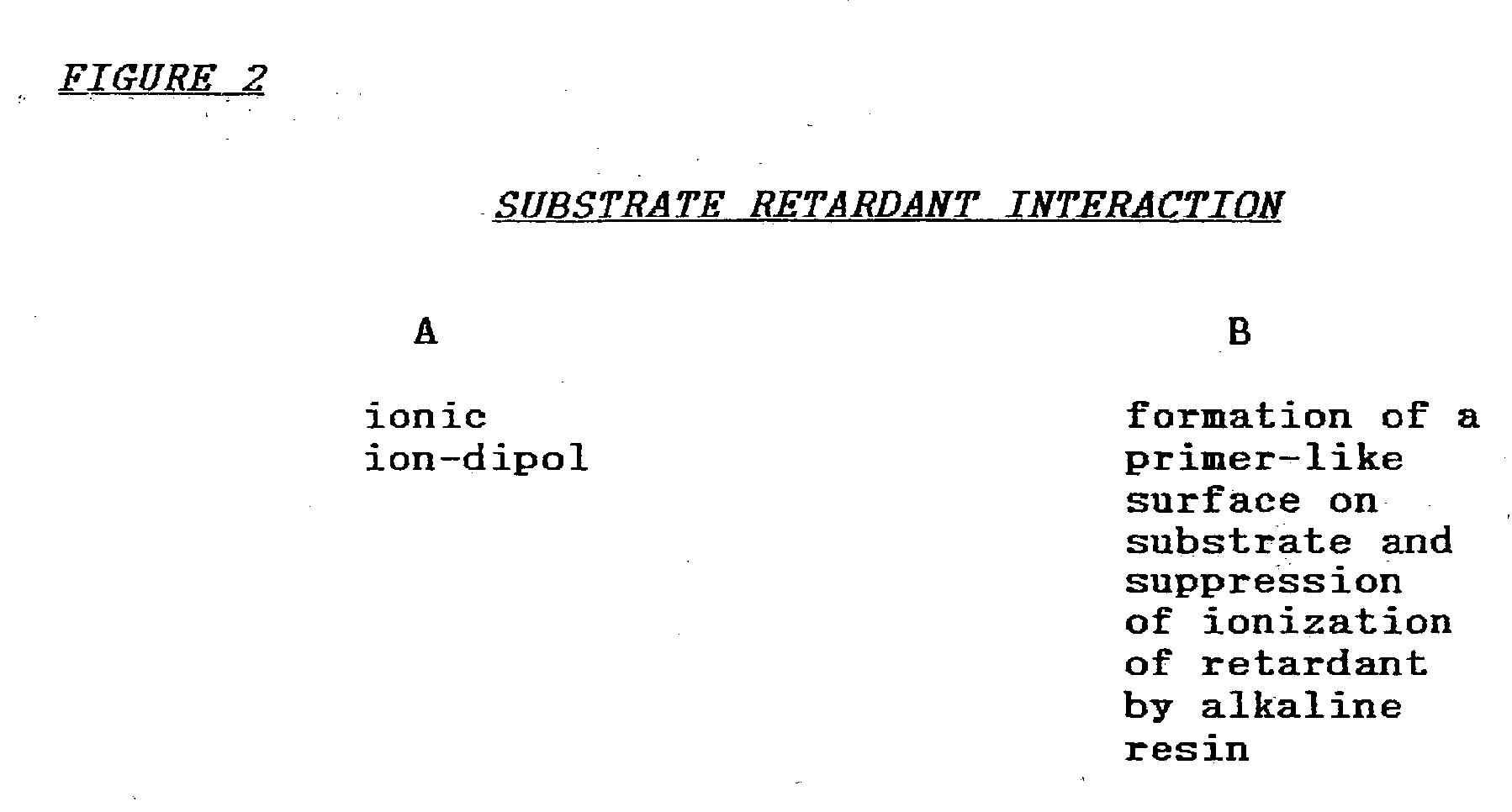Flame inhibiting and retarding chemical compositions for general use on multiple solid surfaces
a chemical composition and flame retardant technology, applied in the direction of antifouling/underwater paints, biocides, coatings, etc., can solve the problems of unexpected and unsual fire retardant coatings, and achieve the effect of stabilizing the intumescent bas
- Summary
- Abstract
- Description
- Claims
- Application Information
AI Technical Summary
Benefits of technology
Problems solved by technology
Method used
Image
Examples
embodiment 1
Example 1-1
[0030] Colloid dispersing solution (CDS): A colloid dispersing solution is prepared by dissolving 50 g hydroxyethylcellulose (HEC) (“CELLOSIZE”, Union Carbide) in 1000 g water (5%). The mixture is allowed to clear with occasional stirring.
[0031] Intumescent base (IB): To the colloid dispersing solution are added in succession 125 g urea, 125 g melamine, and or amino acid mixtures, 100 g glycerol, and 150 g starch. The volume of the mixture increases to 1500 ml. To maintain the concentration of HEC in the mixture, 25 g of the modified cellulose is added to the mixture. If the volume at this point is different, the addition of HEC would be 5% of the volume increase. After thorough mixing, 300 g ammoniumpolyphosphate is added to the mixture.
[0032] Intumescent mixture (IM): Then, in the order, the following materials are added under thorough mixing and homogenization: 75 g aluminum hydroxyde, 67.5 g aluminum trioxide, 56.25 g silicone dioxide, 75 g titanium dioxide, 67.5 g...
example 1-5
[0035] The intumescent base for the mixture is prepared by adding to the colloid dispersing solution 125 g urea, 125 g melamine, 100 g glycerol, and 150 g starch. The volume of the mixture increases to 1500 ml, but no further HEC is added to compensate for the dilution. All other steps of Example 1-1 are followed as described.
example 1-6
[0036] The intumescent mixture is prepared by adding to the intumescent base of Example 1-1 300 g ammonium polyphosphate, 75 g aluminum hydroxide, 87.5 g aluminim trioxide, 58.25 g silicone dioxide, 75 g titanium dioxide, and 67.5 g zirconium dioxide. All other steps of Example 1-1 are kept as described.
PUM
| Property | Measurement | Unit |
|---|---|---|
| volume | aaaaa | aaaaa |
| thermal resistance | aaaaa | aaaaa |
| thermal transmission | aaaaa | aaaaa |
Abstract
Description
Claims
Application Information
 Login to View More
Login to View More - R&D
- Intellectual Property
- Life Sciences
- Materials
- Tech Scout
- Unparalleled Data Quality
- Higher Quality Content
- 60% Fewer Hallucinations
Browse by: Latest US Patents, China's latest patents, Technical Efficacy Thesaurus, Application Domain, Technology Topic, Popular Technical Reports.
© 2025 PatSnap. All rights reserved.Legal|Privacy policy|Modern Slavery Act Transparency Statement|Sitemap|About US| Contact US: help@patsnap.com


